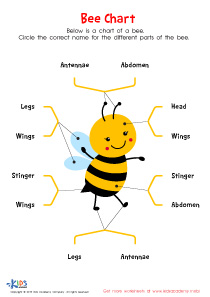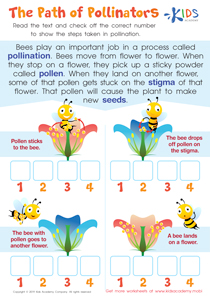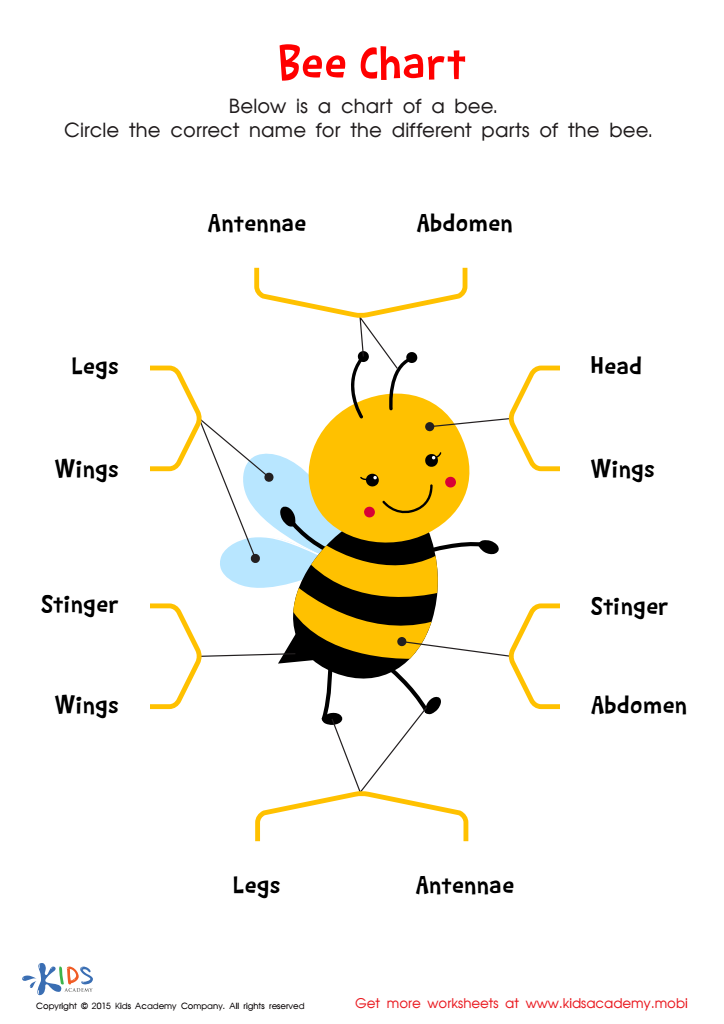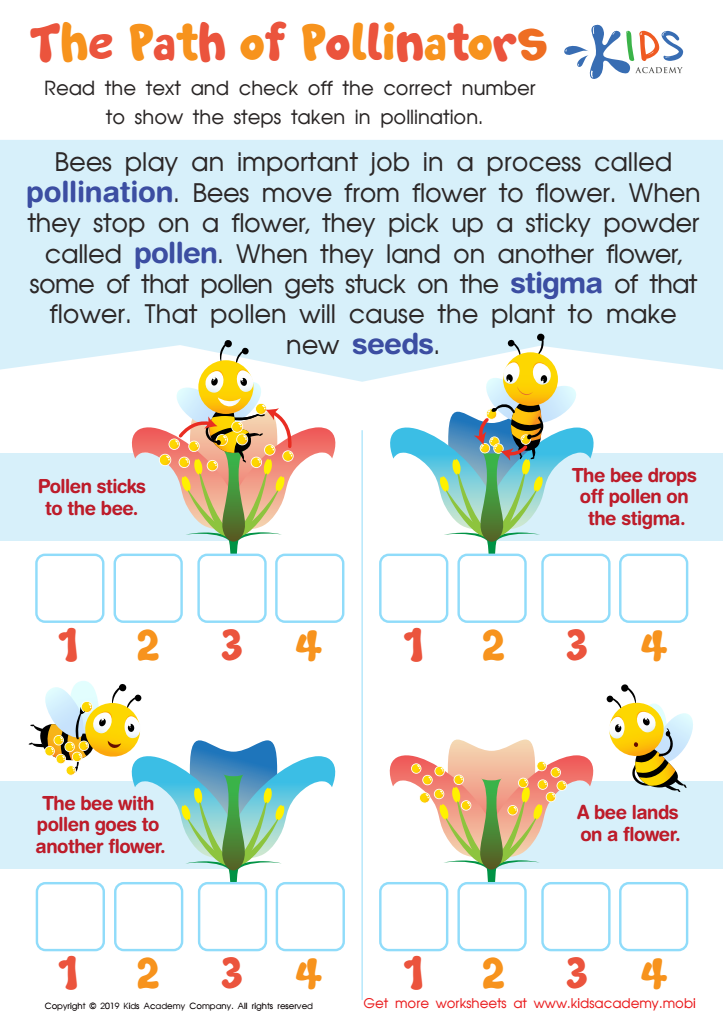Pollinators - Lesson for Grade 2, Chapter - Relationships in ecosystems
In the Pollinators lesson, part of the Relationships in Ecosystems unit in Science for Grade 2 students, learners will embark on an enlightening journey to understand the critical role of pollinators in our ecosystems. Through engaging activities like the Bee Chart Worksheet and The Path of Pollinators Worksheet, students will explore the diverse world of pollinators, including bees, butterflies, birds, and other animals that facilitate the transfer of pollen from one flower to another. This process is essential for the production of fruits, seeds, and more plants, showcasing the importance of pollinators in supporting not just the natural world but also human agriculture and economies.
Understanding the vital role of pollinators and the challenges they face is crucial for students at an early age. This knowledge will instill in them an appreciation for biodiversity and the interconnectedness of life. By learning about the significance of pollinators, students will be encouraged to develop a sense of responsibility towards protecting these invaluable creatures and their habitats, fostering a generation that is conscious of and proactive in environmental conservation. This lesson is a stepping stone towards nurturing environmentally savvy individuals who can contribute to sustaining the planet's health and diversity.


-
Activity 1 / Bee Chart Worksheet
Buzz, buzz! All kids know that bees make honey and even have stingers, but what else can we learn about these interesting creatures? This joyful bee anatomy worksheet will captivate your child’s interests, while teaching him or her about the parts that make up an insect!
Completing this worksheet will help your child:
• Learn and identify the different body parts of the bee
• Use problem solving skills to pick the right answer for each part.
No stings, here! Increase your child’s knowledge about insects and their anatomy with this adorable bee anatomy worksheet, and extend their knowledge about the bee by talking about how they live, honeycombs, and how to act around a bee. Use this sheet as a springboard for learning more about bees and insects alike! -
Activity 2 / The Path of Pollinators Worksheet
The text in this simple worksheet shows us how important bees are, and the role they play in the pollination process. Bees are very important in a process called pollination. When they fly from flower to flower, they are actually gathering pollen and transferring it to other flowers; making those other flowers grow new seeds. This means that without bees, there would be less flowers and vegetation. After reading the brief text explain how the process of pollination works to your students, help them check off the correct number to show the steps taken in pollination.



